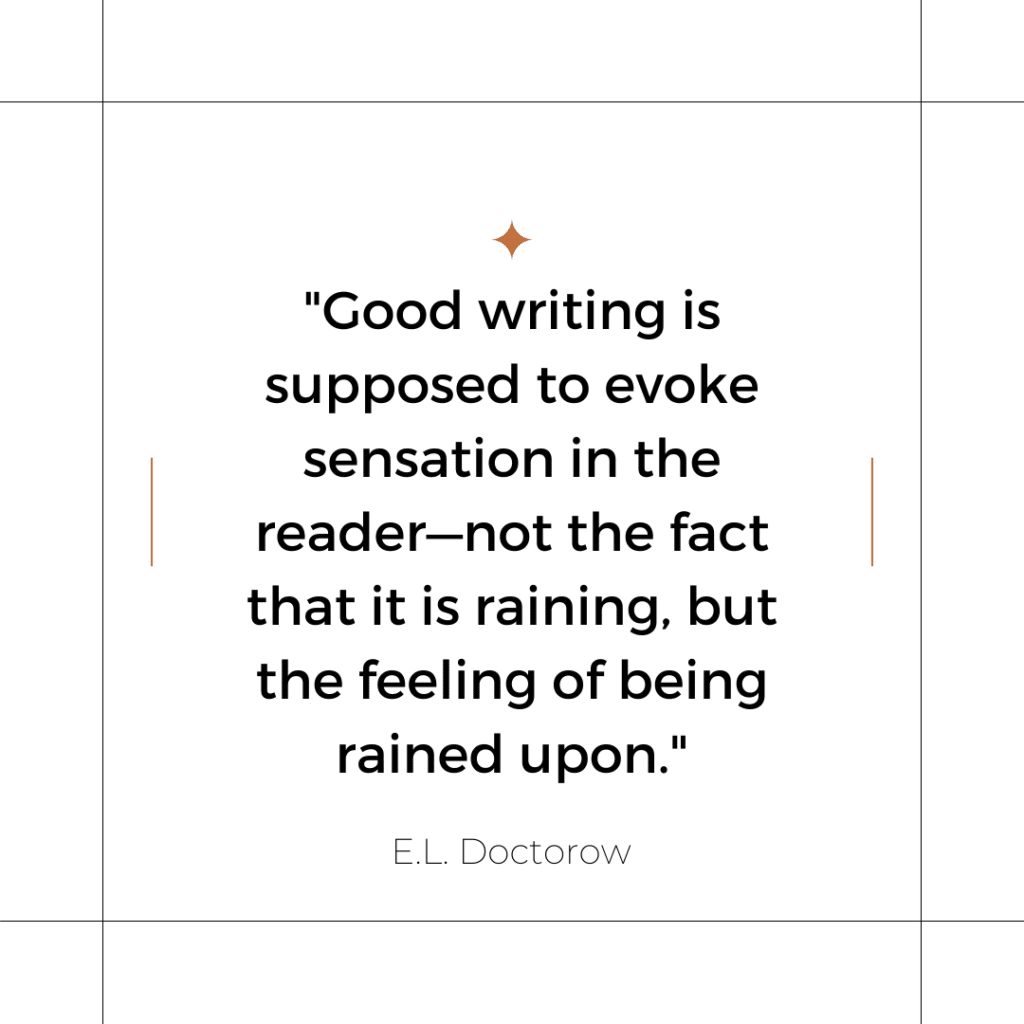
Creating a novel that resonates deeply with readers involves more than just weaving an engaging plot or crafting compelling characters. It’s about immersing your audience in a world that feels real and tangible—a feat achieved by skillfully incorporating the five senses into your novel. Here’s why and how you can infuse your writing with sensory experiences to elevate your story.
The Importance of Incorporating the Five Senses into your Writing
Create a Vivid Setting
Using sensory details to describe environments paints a more vivid picture for the reader. Whether it’s the hustle and bustle of a city street or the tranquil solitude of a forest, sensory descriptions help bring these settings to life. They allow the reader to feel as if they are in that world.
Enhance Emotional Connection
Sensory experiences are closely linked to emotions. Describing the warmth of a cozy fire or the biting chill of a winter wind can evoke corresponding feelings in the reader, forging a deeper emotional connection with the story.
Build Character Depth
How characters perceive their world can offer insights into their personalities. A character who relishes the cacophony of urban life might be seen as energetic. Another who prefers the quiet of the countryside could be perceived as introspective.
Engage the Reader
Incorporating the senses makes your story more relatable and engaging. Readers who can “smell” the ocean breeze or “taste” the bitterness of a character’s coffee are more likely to be drawn into the world you’ve created.
Advance the Plot and Themes
Sensory details can be used for foreshadowing or symbolizing themes. The oppressive heat in a scene might symbolize tension, or an unexpected sound can foreshadow a turning point in the plot.
Exercises to Incorporate the Five Senses into Your Novel
Sight
- Color Emphasis Exercise: Choose and rewrite a scene, focusing on colors. Describe the colors of the environment, clothing, or even the lighting and how they reflect the mood or theme of the scene.
- Contrast Exercise: Take a scene and add visual contrasts. For example, juxtapose the brightness of a well-lit room against the shadows in the corners. Or the starkness of a barren landscape against a vibrant sky.
- Detail Spotlight Exercise: Select a mundane moment in your story and describe it in detail. Focus on small visual elements like the pattern on a carpet, the way light filters through a window, or the expressions on a character’s face.
Sound
- Ambient Sound Exercise: Identify a scene and layer in background noises. Describe the distant sounds of traffic, the rustling of leaves, or the murmur of people in another room.
- Dialogue Enhancement Exercise: Choose a dialogue scene and integrate sounds that complement or contrast the conversation, like the clinking of dishes in a tense dinner scene or the soft hum of nature during a romantic exchange.
- Silence Exploration Exercise: Find a moment of silence in your story and describe it. Focus on what the absence of sound feels like and how it amplifies the emotions or tension in the scene.
Smell
- Memory Trigger Exercise: Write a scene where a particular smell evokes a memory for the character, providing backstory or insight into their emotional state.
- Environmental Smell Exercise: Integrate distinct smells into a setting, like the salty air near the ocean, the earthy scent of a forest, or the industrial odors of a city.
- Emotion-Driven Smell Exercise: In a scene with strong emotions, describe how the character’s perceptions of smell change. For example, fear might make them more aware of metallic or acrid scents.
Taste
- Food Description Exercise: Write a scene involving a meal. Focus on describing the flavors in detail, considering how these tastes reflect the mood or cultural setting.
- Subtle Taste Exercise: In a non-eating scene, describe a subtle taste experienced by the character, like the taste of blood from a bitten lip during anxiety or the dryness of their mouth in a moment of fear.
- Taste and Emotion Exercise: Link the taste experience with the character’s emotional state. Describe how emotions like joy, sadness, or disgust influence their taste perception.
Touch
- Textural Differences Exercise: Describe the textures around the character in a scene. Contrast the feel of different surfaces, fabrics, or natural elements they come into contact with.
- Emotional Touch Exercise: Focus on how physical sensations change with emotions. Describe the physical manifestation of feelings, like the heat of anger or the chill of fear.
- Interactive Touch Exercise: Write a scene where the character interacts physically with their environment, focusing on the sensations of touch. This could be the roughness of tree bark, the smoothness of glass, or the discomfort of sitting on a hard surface.
Conclusion
Incorporating the five senses in your novel is a dynamic way to create a vivid, immersive world. It allows readers to experience your story fully, not just observe it. Remember, the key is balance in writing description. Sensory details should serve to deepen the narrative without overwhelming it. Using the five senses, you can turn a good story into an unforgettable, sensory-rich journey for your readers.

